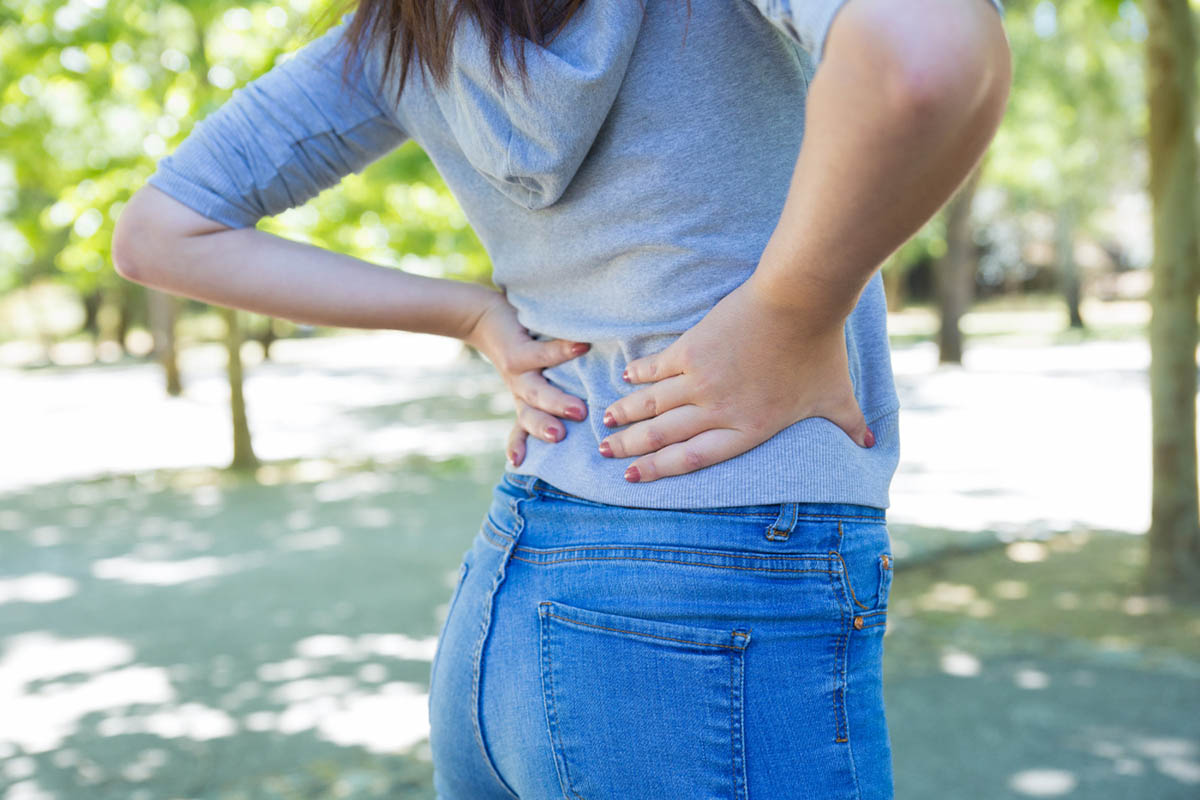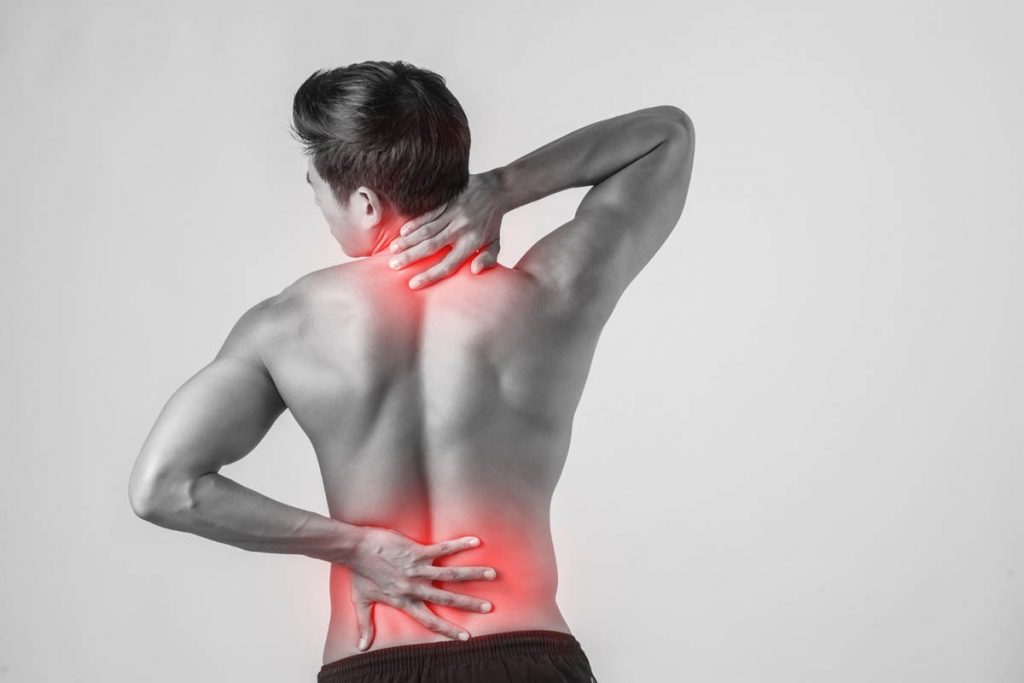Middle back pain, also known as thoracic spine pain, is a common condition that affects a significant portion of the population. Although it is not as prevalent as lower back pain, chronic middle back pain still affects many adults, with some studies indicating a prevalence rate of nearly 20%.
Understanding the causes and symptoms of middle back pain is essential for effective treatment and long-term relief. This comprehensive guide will delve into the various aspects of middle back pain, including its causes, common symptoms, and middle back pain treatment.
Anatomy of the Back
The back is a complex structure composed of bones, muscles, ligaments, blood vessels, and nerves. The thoracic spine, located in the middle back, consists of twelve vertebrae (T1-T12) that connect to the rib cage. This section of the spine provides stability and protection to vital organs, including the spinal cord, while allowing a wide range of movements. Any issues in this area can lead to significant discomfort and pain.
What is Middle Back Pain?
Middle back pain refers to discomfort or pain in middle of back experienced in the thoracic spine region. This type of pain can vary in intensity, ranging from a dull ache to sharp, stabbing sensations. It can be acute, lasting for a short period, or chronic, persisting for weeks or even months. Identifying the root cause of middle back pain is crucial for determining the appropriate medical treatment approach.
What Causes Middle Back Pain?

Poor Posture
Poor posture is a common cause of middle back pain. Spending prolonged periods sitting or standing with improper alignment can strain the thoracic spine and surrounding muscles, leading to muscle tension and pain and making daily activities more difficult.
Symptoms:
- Persistent ache in the middle back
- Tightness and stiffness
- Discomfort that worsens with prolonged sitting or standing
Overweight
Carrying excess weight puts additional stress on the spine and can lead to middle back pain, mainly if it results in weak muscles that are less able to support the spine. This can also exacerbate bladder control issues.
Symptoms:
- Aching pain in the middle back
- Increased discomfort during physical activities
- Difficulty maintaining good posture
Muscle Strain or Sprain
Overuse or sudden movements can cause muscle strain or sprain in the middle back, leading to muscle tightness and pain, potentially affecting neck pain as well.
Symptoms:
- Sharp pain in the affected area
- Muscle stiffness and spasms
- Pain that intensifies with movement
Aging
As we age, the spine undergoes degenerative changes, such as spinal stenosis, that can lead to middle back pain. Additionally, symptoms of depression might become more pronounced due to chronic pain.
Symptoms:
- Chronic pain in the middle back
- Reduced flexibility
- Increased pain with physical activity
Lack of Exercise
A sedentary lifestyle weakens the muscles supporting the spine, contributing to middle back pain and affecting overall physical health. Mental health conditions, such as severe depression, can also arise from chronic pain and inactivity.
Symptoms:
- Dull, persistent pain
- Muscle weakness and stiffness
- Discomfort during movement
Accidents or Other Injuries
Traumatic injuries, such as those sustained in car accidents or falls, can cause middle back pain, especially if there is pressure on nerves in the thoracic region.
Symptoms:
- Sudden, severe pain
- Bruising and swelling
- Limited range of motion
Scoliosis
Scoliosis, a condition characterized by an abnormal curvature of the spinal column, affects 2-3% of the United States population.
Symptoms:
- Uneven shoulders or hips
- Chronic middle back pain
- Noticeable spinal curvature
Arthritis
Arthritis, particularly osteoarthritis, can affect the thoracic spine and cause middle back pain, often necessitating medical care. Drug treatments and other medical interventions may be required for pain management.
Symptoms:
- Persistent pain and stiffness
- Swelling and inflammation
- Reduced range of motion
Fracture
Fractures in the thoracic vertebrae can result from trauma or conditions like osteoporosis, which can compromise the spinal canal. This can cause severe illness if not treated properly.
Symptoms:
- Sudden, sharp pain
- Tenderness in the affected area
- Difficulty moving without pain
Herniated Disk
A herniated disk occurs when the inner gel-like core of a spinal disk protrudes through the outer layer, pressing on nearby nerves and affecting blood flow.
Symptoms:
- Sharp, radiating pain
- Numbness or tingling
- Weakness in the affected area
Pinched Nerve
A pinched nerve in the thoracic spine can cause significant discomfort, often presenting as chest pain or radiating pain.
Symptoms:
- Radiating pain
- Numbness or tingling
- Muscle weakness
How to Diagnose Middle Back Pain
Physical Examination
A thorough physical exam by a healthcare professional can help identify the cause of middle back pain. This includes assessing posture, range of motion, and areas of tenderness.
Medical History Review
Reviewing the patient’s medical history provides insights into potential underlying medical conditions or past injuries that could contribute to middle back pain.
Imaging Tests
Imaging tests such as X-rays, MRI, or CT scans can provide detailed views of the spine and help diagnose structural issues like fractures, herniated disks, or scoliosis, facilitating evidence-based treatment.
Effective Treatments for Middle Back Pain
Self-Care
Self-care strategies are often the first line of defense against middle back pain.
- Rest: Allowing time for the back to heal can reduce pain and inflammation.
- Applying Heat or Ice: Using a heating pad or ice pack can help manage pain and inflammation. Heat can relax tight muscles, while ice can reduce inflammation.
- Gentle Stretching and Exercises: Activities like yoga and Pilates can improve flexibility and strengthen the back muscles.
- Maintaining Good Posture: Proper alignment can prevent strain on the thoracic spine.
- Using Ergonomic Furniture: Ergonomic chairs and workstations support good posture and reduce strain.
Medications
Over-the-counter pain relievers like ibuprofen or acetaminophen can help manage pain. In more severe cases, a doctor may prescribe stronger medications or muscle relaxants, including non-steroidal anti-inflammatory drugs.
Physical Therapy
Physical therapy is a highly effective treatment for middle back pain. Physical therapists can design personalized exercise programs to strengthen the back, improve posture, and increase flexibility. Techniques like manual therapy, massage, and electrotherapy can also alleviate pain and promote healing, ensuring clinical practice standards are met.
Prevention Strategies
Preventing middle back pain involves adopting a healthy lifestyle and being mindful of posture. Regular exercise, maintaining a healthy weight, and using ergonomic furniture can significantly reduce the risk of developing middle back pain and improve overall physical health.
When to Seek Medical Help for Middle Back Pain

While many cases of middle back pain can be managed with self-care and physical therapy, it is essential to seek medical help if the pain is severe, persistent, or accompanied by symptoms like numbness, tingling, or weakness. These could indicate more serious underlying conditions that require professional treatment from a healthcare provider.
Find Lasting Relief from Middle Back Pain with Land and Sea PT
At Land and Sea Physical Therapy, our team of experienced physical therapists is dedicated to helping you find lasting relief from middle back pain. We offer personalized treatment plans tailored to your specific needs, incorporating the latest techniques and evidence-based practices. Our physical therapy services are designed to address your unique pain challenges effectively. Request appointment today to start your journey toward a pain-free life with medical treatment.
Conclusion
Middle back pain is a common issue that can significantly impact your quality of life. Understanding its causes and symptoms is crucial for effective treatment. Many options are available to manage and alleviate middle back pain, whether through self-care, medications, or physical therapy. By adopting preventive measures and seeking professional help when needed, you can maintain a healthy, pain-free back and improve your overall physical health.
FAQs
What are red flags for middle back pain?
Red flags for middle back pain include severe pain that does not improve with rest, unexplained weight loss, fever, numbness, or weakness in the legs, or shortness of breath. If you experience any of these symptoms, seek medical attention immediately.
How to relieve mid back pain?
Relief from mid back pain can be achieved through rest, applying heat or ice, gentle stretching, maintaining good posture, using ergonomic furniture, and seeking physical therapy. Incorporating cognitive-behavioral therapy can also help manage chronic pain by addressing the mental aspects of pain perception.
Why is my mid back so tight?
Middle of back pain can result from poor posture, muscle strain, lack of exercise, or underlying conditions like arthritis or scoliosis. Regular stretching, strengthening exercises, and maintaining good posture can help alleviate tightness. In some cases, consultation with a mental health professional may be beneficial if pain is linked to stress or anxiety.

